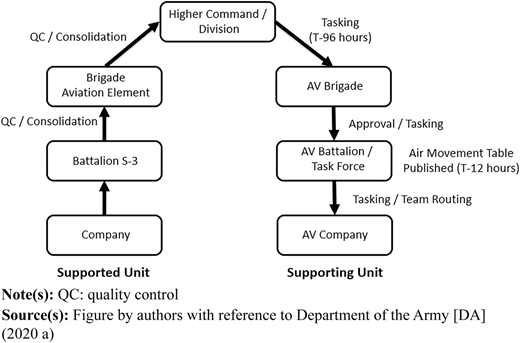2023-05-22 ノースカロライナ州立大学(NCState)
◆この研究は、ヘリコプターのリソースの利用可能性、搭載能力、作戦範囲、給油、ヘリコプターの乗員の制約など、ヘリコプターの使用方法とタイミングを制限するさまざまな要素を考慮に入れるアルゴリズムを開発しました。
◆これにより、作戦計画を最適化する時間が短縮され、空中移動任務の実行における時間節約が可能となります。
<関連情報>
- https://news.ncsu.edu/2023/05/speeding-helicopter-operations/
- https://www.emerald.com/insight/content/doi/10.1108/JDAL-11-2022-0013/full/html
米陸軍航空局の航空移動作戦の割り当て、利用、ルーティング US Army Aviation air movement operations assignment, utilization and routing
Russell Nelson, Russell King, Brandon M. McConnell, Kristin Thoney-Barletta
Journal of Defense Analytics and Logistics Published:23 May 2023
DOI:https://doi.org/10.1108/JDAL-11-2022-0013

Abstract
Purpose
The purpose of this study was to create an air movement operations planning model to rapidly generate air mission request (AMR) assignment and routing courses of action (COA) in order to minimize unsupported AMRs, aircraft utilization and routing cost.
Design/methodology/approach
In this paper, the US Army Aviation air movement operations planning problem is modeled as a mixed integer linear program (MILP) as an extension of the dial-a-ride problem (DARP). The paper also introduces a heuristic as an extension of a single-vehicle DARP demand insertion algorithm to generate feasible solutions in a tactically useful time period.
Findings
The MILP model generates optimal solutions for small problems (low numbers of AMRs and small helicopter fleets). The heuristic generates near-optimal feasible solutions for problems of various sizes (up to 100 AMRs and 10 helicopter team fleet size) in near real time.
Research limitations/implications
Due to the inability of the MILP to produce optimal solutions for mid- and large-sized problems, this research is limited in commenting on the heuristic solution quality beyond the numerical experimentation. Additionally, the authors make several simplifying assumptions to generalize the average performance and capabilities of aircraft throughout a flight.
Originality/value
This research is the first to solve the US Army Aviation air movement operations planning problem via a single formulation that incorporates multiple refuel nodes, minimization of unsupported demand by priority level, demand time windows, aircraft team utilization penalties, aircraft team time windows and maximum duration and passenger ride time limits.



